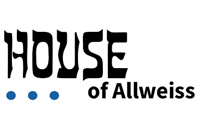The technology business moves quickly, and you move with it or are lost. From 1986 to 1989 the bulk of our sales were the TMC-830 host adapter, and the TMC-820/840 low cost adapter using the Seagate chip we designed. Al and I discussed this and felt that we needed to unify the eight bit product family, and gain complete control of the LSI SCSI chip. We decided to develop the TMC-950 chip which would include all the performance enhancements of the TMC-830 adapter and SCSI-2. We could then have a single eight bit Host Adapter line that used this chip. Design started in late 1987. This was the first LSI chip Al had done by himself, without the help of Seagate engineers. He had picked VLSI technology as the foundry for the chip and he and they had problems. The schedule for the chip was nine months; it ended up taking almost two years.
Our software development however was industry leading. We had very good relations with OEM manufacturers and they often came to us first. Our “Disk Maestro” software package continued to add features and functionality. We eventually supported not only disk drives but tape drive, removable disk drives, rewritable optical disk drive, CD-ROM drives, scanners and printers. Disk drive manufactures were continually increasing their storage capacity and many time offered more storage than the IBM PC compatible or MS-DOS software could handle. Future Domain was the first to break the “megabyte” barriers for disk drives on the IBM PC. In addition we added value to the package by providing formatting and backup utilities not common at that time. Later, we would bundle third party software for additional revenue. So even though our hardware development began to fall behind, our software offering helped keep our product a compelling offering.
As early as 1985 some customers began asking for 16 bit SCSI host adapters from us. We had several variants of our 8 bit host adapter design, but we had not done a 16 bit adapter since the one we designed for IOMEGA in 1984. I discussed this with Al. He rightly pointed out that our eight bit adapter beat every other adapter, 8 or 16 bit in benchmarks. I agreed with him, but I explained to him that in the marketplace perception is often more important than reality. Also computers and disk drives were getting faster and soon the 8 bit interface would become a bottleneck. I told Al we needed an LSI version of a sixteen bit AT bus adapter by the end of 1988. He felt that he needed to complete the new MCS-350 Microchannel adapter we had just started developing for the new IBM PS/2 line of computers before the TMC-1800 sixteen bit AT bus LSI chip. However he still felt he could deliver the TMC-1800 by early 1989. We went with that plan.
In addition we did not have any offering in the very high end “Bus Master” adapter market which was dominated by Adaptec and Western Digital. These adapters were used in PC servers running UNIX or Novell Netware, the only server operating systems at the time. We agreed that we were not going to participate in that market at this time, we simply did not have the resources.
